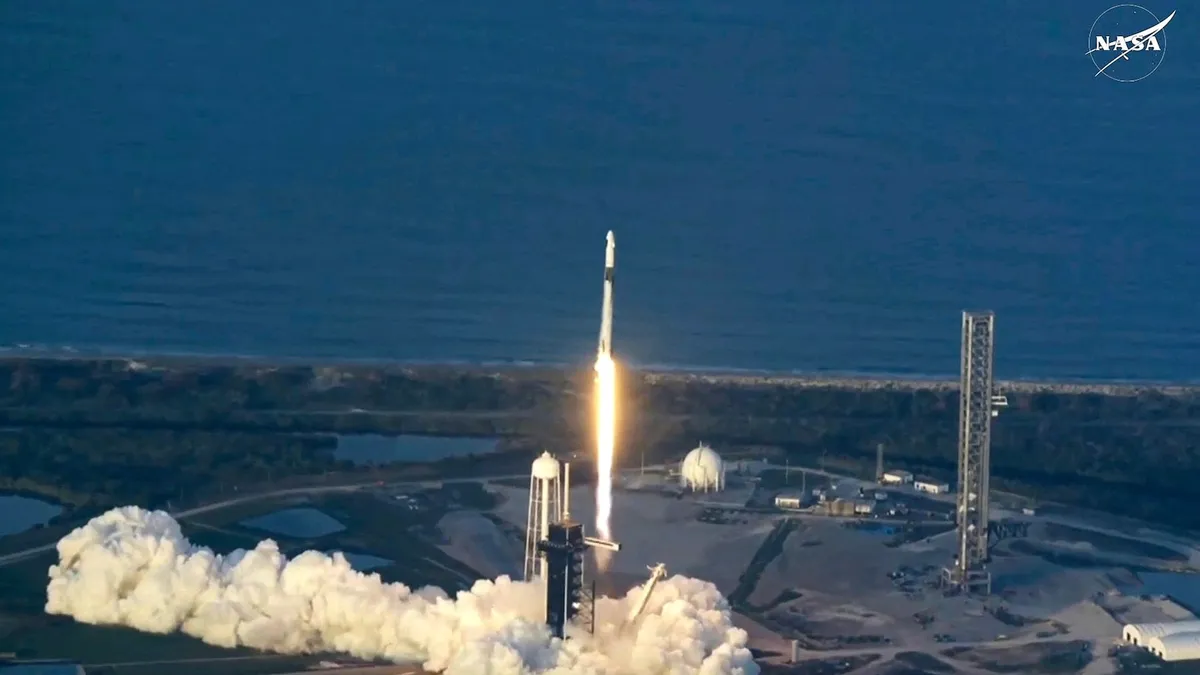
NASA's SpaceX Crew-10 mission has successfully lifted off from the Kennedy Space Center in Florida, marking a significant milestone in the agency's ongoing efforts to maintain a human presence aboard the International Space Station (ISS). The launch took place on Friday evening at 7:03 p.m. ET, following a previously scrubbed attempt earlier in the week. The mission's astronauts, including NASA's Sunita Suni Williams and Butch Wilmore, are now en route to the ISS, one step closer to returning home.
Powered by the reliable Falcon 9 rocket, the Crew-10 spacecraft achieved an impressive speed of 17,500 mph as it ascended into space. The spacecraft is scheduled to dock with the ISS on Saturday at 11:30 p.m. ET, with the hatch opening for crew entry planned for 1:05 a.m. ET on Sunday. This timely launch comes after a postponement on Wednesday due to a technical issue involving a ground support clamp arm on the Falcon 9. SpaceX later confirmed that the hydraulic system problem was resolved, allowing for a successful take-off on Friday.
The Crew-10 team comprises an impressive lineup of astronauts: mission commander NASA astronaut Anne McClain, mission pilot NASA astronaut Nichole Ayers, Japan Aerospace Exploration Agency (JAXA) astronaut Takuya Onishi, and Russian cosmonaut Kirill Peskov from Roscosmos. This mission will relieve four astronauts currently stationed aboard the ISS, including Williams and Wilmore, who have been on an extended mission.
Initially planned for a short stay, Williams and Wilmore's mission has extended to about nine months due to safety concerns regarding their return on the Boeing Starliner spacecraft. They arrived at the ISS in early June, but in September, NASA decided to return the Starliner back to Earth empty, citing technical issues. This marked Boeing's inaugural crewed flight of the Starliner, which successfully landed on September 6.
During their time aboard the ISS, Williams and Wilmore have actively engaged in critical research and maintenance, contributing to the ongoing success of the station's operations. Notably, Williams has achieved a remarkable milestone by breaking the record for the most spacewalking time by a woman, accumulating 62 hours and 6 minutes in the vacuum of space.
NASA has emphasized that Williams and Wilmore were never stranded during their extended stay. In September, a Roscosmos Soyuz spacecraft delivered additional crew members to the ISS, including two cosmonauts and an American astronaut. This was followed by the arrival of astronaut Nick Hague and cosmonaut Aleksandr Gorbunov via the SpaceX Crew Dragon Freedom spacecraft. Both the Crew Dragon Freedom and the Soyuz remain docked at the ISS for emergency support.
Following the Crew-10 mission, the Crew Dragon capsule that transported Hague and Gorbunov will be the vehicle responsible for bringing Williams, Wilmore, and the other Crew-9 astronauts back to Earth. NASA anticipates that they could be home as soon as Wednesday.
During their time on the ISS, the Crew-10 mission is set to conduct over 200 scientific experiments and technology demonstrations. These initiatives are vital for advancing human knowledge and capabilities as we aim to explore deeper into space. NASA continues to push the boundaries of scientific discovery, and the Crew-10 mission is a testament to their commitment to space exploration.